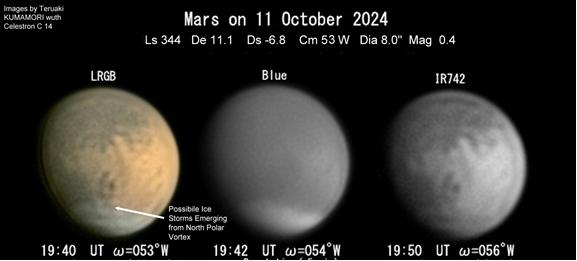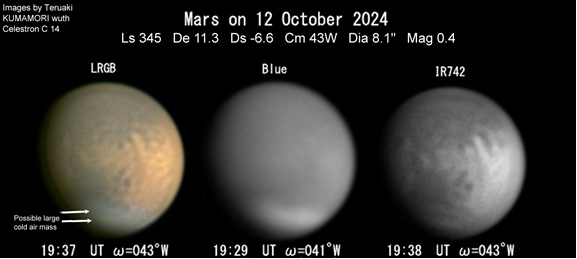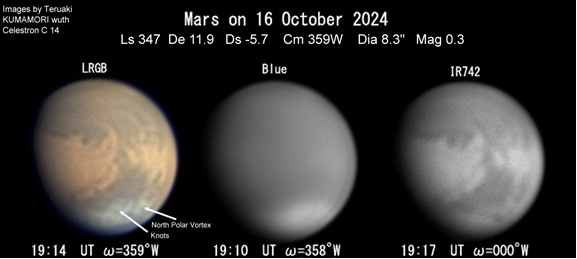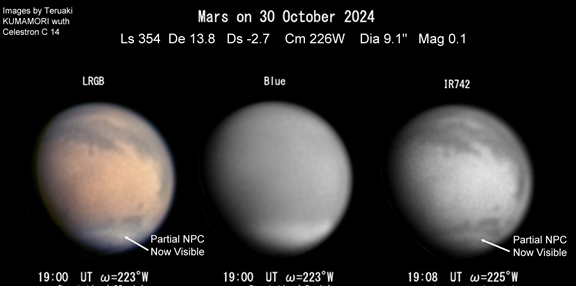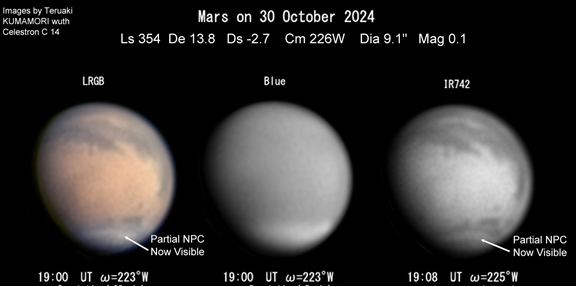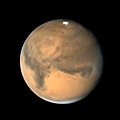
Mars Apparition Notes - 2024-2025 Featured Observations
Bright dust clouds were imaged in and around Erythraeum Mare in mid-Summer. See the August 20, 21 and 22, 2024 images below recorded by Gary Walker with a 10" A-P Mak-Cass. in Georgia USA. The leftmost image was recorded by Mike Wolle on August 14th using an 18" Newtonian in Knittefield, Austria. It shows the region before the dust storms. The atmosphere looks like it is saturated in dust. The Aug. 20th image shows a large dust cloud in Eos and one in a kilometers-long band in Erythraeum Mare. Further south is another kilometers-long band stretching from Argyre to Ogygis Regio. The August 21st image shows the two dust bands consolidated and stretching westward covering Bosporous and Solis Lacus. The dark area southwest of Aurora Sinus is the western end of Erythraeum Mare. The August 22nd image shows a mostly clear Erythraeum Mare and a large, very bright dust cloud over Solis Lacus. It also shows a large swath of dust stretching from Argyre II through Australe in the South Polar Region and curving into Daedalia along the morning limb. The blue clouds in the North Polar Region show changes occurring in what is generally referred to as the North Polar Hood.
Gary Walker also recorded the August 24, 25, 26 and 28 images below. I think they show the aftermath of the dust storms with much of the dust deposited on the ground. However, there is still some much-reduced airborne dust on August 24th and 25th. Normal features are now becoming visible in the August 26th and 28th images. The North Polar Hood activity has increased.


